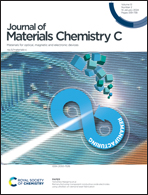Interlayer and intermolecular excitons in various donor–acceptor heterostructures: applications to excitonic devices
Abstract
Donor–acceptor (D–A) heterostructures (HSs) that use organic–inorganic halide perovskites (OIHP), two-dimensional transition metal dichalcogenides (TMDCs), π-conjugated organic small/macro molecules, and quantum-dots (QDs) are promising platforms for exciton-based photonics and optoelectronics. Hetero-interlayer excitons (HIXs) and hetero-intermolecular excitons (exciplexes; XPs) formed through optical and/or electrical charge transfer (CT) in various D–A HSs are fundamental and important quantum quasi-particles for light-emitting, light-detecting, and light-harvesting systems. In this paper, various HSs such as OIHP/QDs (or OIHP/TMDCs) D–A systems, TMDC-based p–n junctions, and π-conjugated organic D–A molecules with type-II band alignment are reviewed for CT HIXs and XPs. Comparing pristine excitons (e.g., Frenkel exciton (XF) in organic semiconductors and Wannier exciton (XW) in inorganic semiconductors), the distinct characteristics of HIXs and XPs in various HSs are described in terms of luminescence, binding energy, lifetime, and dipole moments. HIXs and XPs exhibit considerably long lifetimes owing to the weak overlap of the spatially separated and bound electron and hole wave functions. The directional coupling and long-range interactions of HIXs and XPs with other excitons in HSs can modulate the energy-/charge-transfer efficiency of excitonic devices. Recent experimental results of laser confocal microscopy photoluminescence (PL) spectra, time-resolved PL-decay characteristics, back focal plane PL mapping for dipole direction, luminescence, and current–voltage characteristics in various HSs are reviewed to emphasize the notable characteristics of HIXs and XPs. For excitonic devices, the applications of HIXs and XPs in light-emitting diodes, photodetectors, solar cells, photonic sensors/devices, and exciton transistors are reviewed.

- This article is part of the themed collection: Journal of Materials Chemistry C Recent Review Articles


 Please wait while we load your content...
Please wait while we load your content...